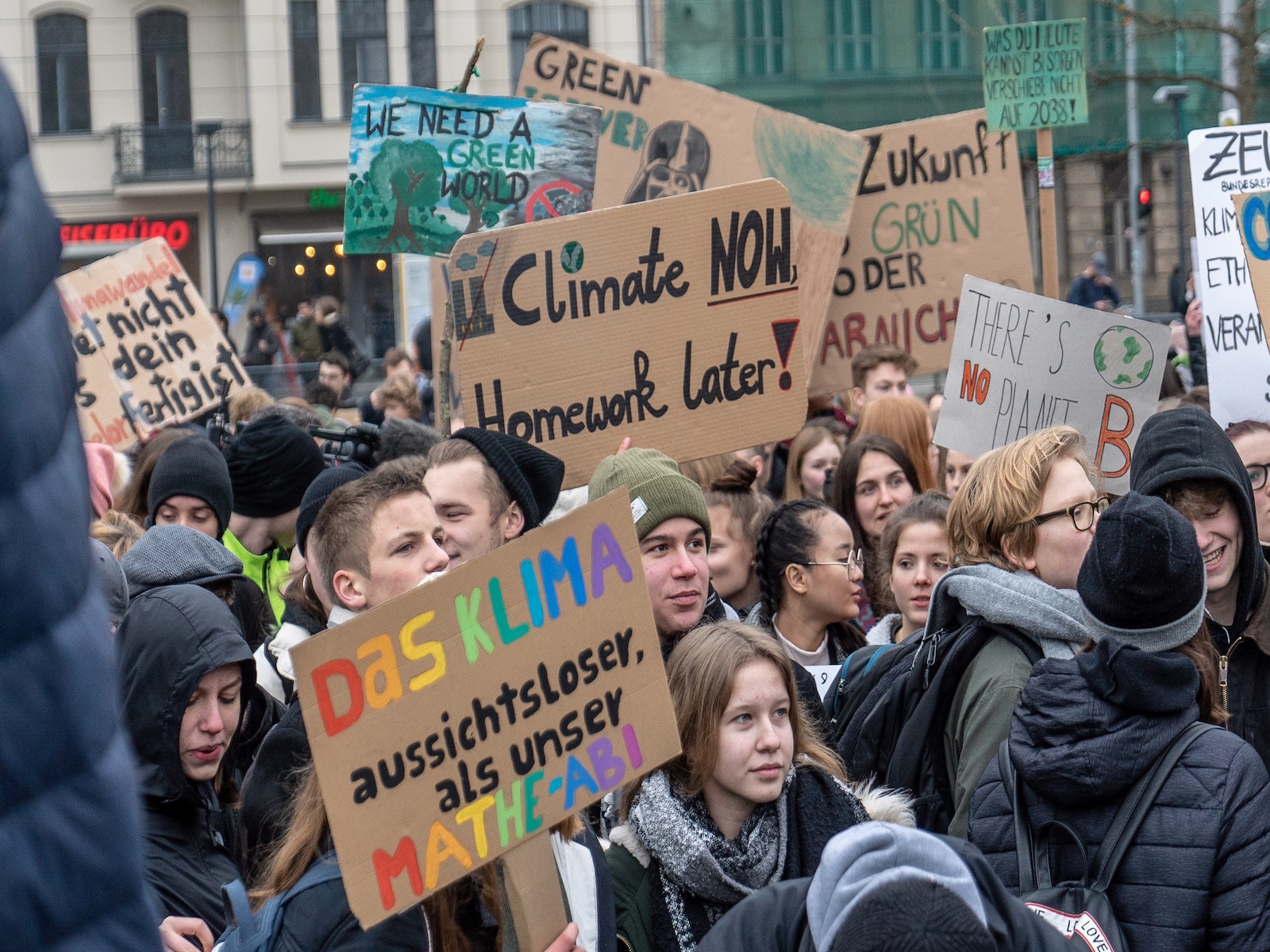In the build-up to COP26 in Glasgow around 400 young climate leaders from all over the world met at the Youth4Climate: Driving Ambition summit in Milan to exchange ideas and join in dialogue with experts and high-level speakers, including over 50 Ministers, experts and decision-makers from around the world.
After three days of discussions, youth participants agreed on the Youth4Climate Manifesto, a synthesis document bringing together their key concerns and requests related to climate policy and youth engagement.
The Manifesto was then presented to Ministers at the Pre-COP26 in Milan and at the COP26 in Glasgow, with some elements even making their way into the final version of the Glasgow Climate Pact.
Youth4Climate: Driving Ambition
In recent history, youth have taken centre stage in raising awareness on climate change and applying pressure on policymakers through grassroots movements and active engagement in civil society. In turn, decision-makers have recognised that capitalising on youth activism, and therefore turning protest into meaningful participation and engagement, can inject new ideas into climate negotiations and increase global ambition on climate change.
This was one of the prioritise of the UK-Italy partnership Presidency of the COP26 and a key motivator in the creation of the Y4C event in Milan as part of a series of Pre-Cop26 events that focused on youth engagement.
The Y4C event was therefore designed to not only provide youth with experience and capacity building but also a way for them to influence negotiations directly through a final outcome document – the Youth4Climate Manifesto – which sums up the key ideas and proposals put forth by young people in answer to the climate crisis, creating a blueprint of what youth want from climate action in the future and informing the discussions of world leaders in both Milan and Glasgow.
The outcome of #COP26 was an important step for elevating the voices of #Youth4Climate champions and activists 🌍 and facilitated their engagement with decision-makers. 🤝 https://t.co/63XaPpH1gp
— Youth4Climate (@Y4Cofficial) November 23, 2021
Youth Engagement
The Y4C event and manifesto Manifesto are divided into 4 thematic areas – youth driving ambition, sustainable recovery, non-state actors’ engagement and climate-conscious society.
IN the section on Youth Driving Ambition, Y4C participants looked at how to ensure that young people are at the forefront of local, national and global climate action through meaningful participation. The manifesto calls for parties to the Paris Agreement to provide more spaces for engagement – through initiatives such as the Y4C – and ensure that the views and suggestions of youth reach the tables of high-level decision-makers and future climate negotiations.
For this to happen policymakers are called to provide youth with training, capacity building and funding so that they have not only the spaces but also the skills and means to engage in dialogue and express their ideas on climate issues.
The Glasgow Climate Pact makes numerous references to youth inclusion in decision making processes such as “Recognizing the important role of indigenous peoples, local communities and civil society, including youth and children, in addressing and responding to climate change, and highlighting the urgent need for multilevel and cooperative action”, and “Also urges Parties and stakeholders to ensure meaningful youth participation and representation in multilateral, national and local decision-making processes, including under the Paris Agreement.”
Expresses appreciation for the outcomes of the sixteenth Conference of Youth, organized by the constituency of children and youth non-governmental organizations and held in Glasgow in October 2021, and the “Youth4Climate2021: Driving Ambition” event hosted by Italy in Milan, Italy, in September 2021.
Glasgow Climate Pact
Although the exact mechanisms that are discussed in the Manifesto are not deliberated upon in the Climate Pact the inclusion of direct references to youth engagement in decision-making processes is significant and can be considered a major way in which there is a crossover between the Manifesto and the Pact.
In fact, the Y4C event itself is an example of that participation, and the decision to continue financing the project in the future, as well as other events such as the Conference of Youth (COY), an entirely youth-led conference organised by YOUNGO, the official youth constituency of the UNFCCC, and the decision to create a “Youth and public empowerment” day at COP26 in Glasgow are also significant.
It’s Youth and Public Empowerment Day at #COP26
Young climate leaders around the world are an unstoppable force.
Today and everyday we take inspiration from these young people.#TogetherForOurPlanet
— COP26 (@COP26) November 5, 2021
Massimo Tommasoli, Director of Global Programmes for International IDEA, acknowledged how participatory approaches can help shift from short-termism to long-term thinking and strengthen intergenerational justice, advocating for greater youth participation in climate policy, arguing they should be “at the centre of the debate and determine the decision-making processes” and referencing examples such as International IDEA’s work with parliaments, whereby parliaments can protect future generations, such as through creating structures like the Welsh Future Generations Commissioner.
There are also examples of some countries implementing these principles on a national level. Ireland, for instance, has held “town halls” on the country’s climate action plan. The United Kingdom has convened “citizen juries” to help localize climate solutions. And in 2019, Italy became the first country in the world to make climate change part of its national school curriculum. Shifting these kinds of initiatives to a global level begins with mentions such as those found in the Glasgow Climate Pact.
Y4C Manifesto: not just youth
The Manifesto’s third theme tackles the role of Non-State Actors’ Engagement. Here, youth call for a three-pronged approach: supporting and leveraging the contributions of NGOs, private companies, entrepreneurs, artists, farmers and athletes from underrepresented communities; requesting that all stakeholders, and particularly the private sector, lower their emissions so that they are in line with net zero goals and that they are held accountable for their emissions; and finally doubling down on the fossil fuel industry by demanding that world leaders, private sector business people and creatives reject any sponsorships or funding from fossil fuel companies.
Furthermore, in the Y4C Manifesto a key area for promoting non-state actor engagement revolves around “promoting and simplifying the processes for equitable global technology transfer,” both among research institutions and between those institutions and private industry. This point was also taken up at COP26 with the UK-led Breakthrough Agenda, which enlisted 42 nations, aligned itself with this aim, pledging to ramp up the development and rollout of innovative green-tech worldwide.
Along a similar line, the Manifesto’s fourth topic looks at how to create a Climate-Conscious Society. This will involve not only continuing to ensure the participation of youth – with more initiatives such as the Y4C and the creation of a multistakeholder platform – but also keeping a careful eye on education and ensuring that climate issues are included in national curricula.
Yet youth realise that a climate-conscious society doesn’t just stop at schools, it must also be promoted through a wide stretch of activities including sports, art, entertainment, community leaders, influencers, and social media. What is more, young people realise the dangers of lack of information and misinformation and therefore call for media and journalists to be trained in the communication of climate issues and solutions.
Ambition: Where youth and decision-makers part ways
Although youth in Milan were able to reach a consensus on high ambition issues such as phasing out fossil fuels, loss and damage and providing more ambitious NDCs by 2030, in Glasgow these issues were mired by partisan politics and the inevitable concerns and requirements of each nation’s short term interests.
This is evident in the Manifesto’s second theme: sustainable recovery. Here youth included suggestions on how to build back better from the Covid-19 pandemic, containing some of the boldest and most ambitious proposals, such as: setting a 2030 deadline for a complete energy transition, tackling the issue of loss and damage and the inequities that arise from climate change, as well as the development of a transparent and accountable climate finance system that can support the energy transition and drive development in a sustainable direction.
In fact, nowhere is youth ambition more obvious than in the realm of fossil fuels. Youth called for “binding legislation” and “strict timelines with precise guidelines for the transition away from fossil fuel use for energy production” including “Phasing out fossil fuel subsidies and putting a stop to the financing of all new fossil fuel exploration and development starting with a rapid phase out of coal for energy production and putting a stop to international financing of coal plants.” A stark contrast to the “phase-down” of coal power agreed upon in Glasgow.
However, The Glasgow Climate Pact is the first time that a COP decision text has made a direct reference to a transition away from coal reliance and fossil fuel subsidies. Although far less ambitious than their young counterparts this still signals a step in the same direction.
📢 #Youth4Climate participants make a bold demand 🗣 for the eradication of the fossil fuel industry by 2030. pic.twitter.com/1Efjoz48ie
— Youth4Climate (@Y4Cofficial) October 28, 2021
Similarly, on the topic of loss and damage, the Y4C Manifesto made ambitious demands linked to Sustainable Recovery. Although leaders in Glasgow took some needed with Section VI of the Glasgow Climate Pact – which gives more force to the Santiago Network to tackle loss and damage worldwide while bolstering resilience to future climate impacts – progress was far less than what many, including youth, had called for in the build-up to negotiations.
As we seek to accelerate mitigation ambition during this critical decade and keep 1.5 degrees within reach, the contributions of young people will be vital to success. The Manifesto not only gives an indication of what youth believe needs to be prioritised but also provides a blueprint on how to step up ambition and transcend national interests.






